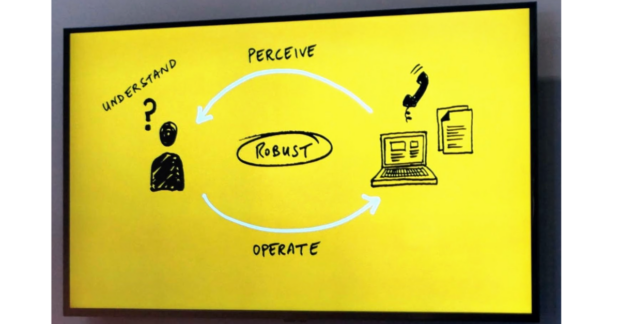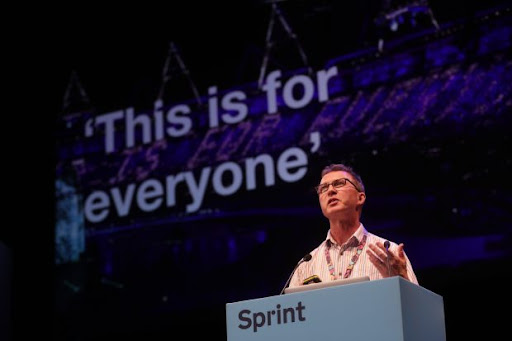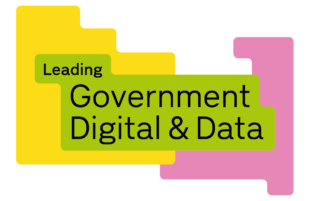Improving the accessibility capability of government
It was just over 7 years ago in March 2016 when I walked into Aviation House in Holborn, where the Government Digital Service (GDS) was based at the time. In the atrium, the World Wide Web Consortium (W3C) Technical Architects Group were having a photoshoot before a meeting. I did a double-take when I saw Sir Tim Berners-Lee (inventor of the World Wide Web) standing there. If I didn’t already know, that confirmed to me that GDS was going to be a cool place to work, and it didn't disappoint.

The team’s growth and work
Initially I helped ensure that GDS’s public-facing products and services were accessible, in particular GOV.UK and the Government as a Platform products, Notify, Pay and Verify. This also included GOV.UK Elements, which later developed into the highly successful GOV.UK Design System which was launched in 2017 leading to components with built-in accessibility through GOV.UK Frontend.
GDS often talks about doing the hard work to make things simple, and this was certainly the case with form component testing. When GDS updated the radio buttons and checkboxes on GOV.UK in 2016 it took a lot of work to make these accessible, particularly with voice recognition software. For example some changes worked with an earlier version of Dragon Naturally Speaking, but not the latest one and narrowing down the reasons for that was difficult.
GDS ran an assistive technology survey in 2016 to establish which technologies were most commonly used for government services. This led to a list of requirements and an accessibility and assisted digital section in the service manual.
When looking at automated test tools in 2017, the GDS accessibility team knew that they were only capable of testing a small percentage of potential accessibility issues, but wanted to be able to prove that, so tests were run with a variety of tools against what we jokingly called the world’s least accessible webpage - which we created specially for this work.
Much technical work was done on creating more accessible data tables in 2017, particularly as the government publishes so much data, often in complex nested tables.
The accessibility test and empathy lab
To run testing, and to help raise awareness of accessibility and assistive technology, we bought and setup laptops with the most commonly-used assistive technologies on them: JAWS screen reader, Zoomtext screen magnifier, and Dragon Naturally Speaking voice recognition.
Initially the “lab” was just kept in a cupboard when not in use, but when GDS moved offices to the White Chapel Building in Aldgate in East London in May 2017, we had the luxury of a large open area to use, so we locked the laptops to a desk and expanded the equipment to include mobile phones and tablets, and things like visual impairment simulation glasses. The accessibility tools lab then became the accessibility empathy lab, and we opened it up to teams across government to test their own products and services or to learn more about the accessibility barriers people face.
The accessibility empathy lab was later expanded to include some Chromebooks. These each had several profiles on them to simulate access needs, based on accessibility personas that we had previously created and shared, for the purpose of helping design and build accessible information and services.
The accessibility community
GDS ran meetups and facilitated discussions in various online groups and channels. We tried to alternate locations for the meetups between London and outside of London to try and reach more people, and had some great talks from people both inside and outside government.
Service Assessments
Government services that are subject to the Government Service Standard have to ensure they make their services accessible.
As part of the Government Service Standard, services are required to:
- be tested with older users and disabled users,
- work on the most commonly used assistive technologies
- at the public beta stage meet level AA of the Web Content Accessibility Guidelines (WCAG 2.1) as a minimum and have an accessibility statement that explains how accessible the service is
The team created a simple and easy-to-run set of tests to get a sense-check of whether service teams had taken a good approach to accessibility. After running these for a while, we trained the service assessment team in how to run the tests themselves.
Public Sector Bodies Accessibility Regulations
When the European Web Accessibility Directive came into force in 2016, GDS was chosen to transpose the legislation into UK law and to become the monitoring body for what became the Public Sector Bodies Accessibility Regulations in 2018. This set a particular standard for digital accessibility that went beyond the existing requirements of the Equality Act (the Disability Discrimination Act in Northern Ireland), which only goes to the level of detail of requiring reasonable adjustments to be made for disabled people.
I got involved in the accessibility regulations awareness campaign which ran from September 2019 for 2 years. I lost count of the number of talks, webinars and question and answer sessions I did for many different groups across the public sector.
As people started to become aware of the new regulations, interest in the accessibility empathy lab increased and we hosted more than 150 visits (around 600 people) from teams across the public sector from 2017 to 2020, including local authorities, the NHS, Transport for London and the emergency services.
We gave an introduction to the lab, demonstrated the assistive technologies and the persona profiles, and assisted teams if they wanted to try testing things. We also ran sessions with teams using the personas to test against. This was highly successful, allowing for many tests to be done in a short time and being able to quickly identify a number of issues that hadn’t been considered.
Training and clinics
Accessibility introduction training had been incorporated in parts of several training programmes, and later we built this into an afternoon of training including an assistive technology demonstration and some interactive exercises, run on many occasions in a number of locations across government, with great help from the user centred design communities team.
More recently, after COVID19 started in 2020 we ran introduction training and accessibility empathy lab introductions online.
We started running accessibility clinics with the idea that any teams at GDS could come to us with questions about accessibility exploring ideas for ensuring that accessibility was included in projects. We ran around 140 clinic sessions from 2016 to 2022 and widened the reach of these from GDS out to the whole of the public sector.
Personal Highlights

Some personal highlights for me have been:
- talking at Sprint 19 about the accessibility regulations and the need to go beyond minimum requirements
- helping build the accessibility community from around 300 people back in 2016 to more than 1,600 now across government and the public sector
- running the accessibility introduction training for the Met Office in Exeter and visiting their operations room; I don’t think I have ever seen so many screens in my life
- talking and meeting with people from across many areas of the public sector as part of the campaign to raise awareness of the Public Sector Bodies Accessibility Regulations
- working with the GDS communications team and the Government Communications Service in Cabinet Office to raise awareness of accessibility needs and techniques among government communications professionals, creating guidance around social media and running live and on-demand recorded sessions for groups
- Global Accessibility Awareness Day 2020 - with around 2,000 people joining us online for sessions on the day it has been one of GDS’s most successful events
2023 and beyond
The work continues in transforming government services as part of the Central Digital and Data Office, where I moved to in 2021. A focus on making at least 50 of the top 75 services achieve a great standard by 2025 includes supporting them to meet and go beyond compliance with the accessibility regulations and requirements. Currently we are looking at the standards and guidance and other products and services that support the end-to-end user journey of building, transforming and delivering services.
I am really proud of the work the accessibility teams (past and present) have done. They have achieved great things and I feel privileged to have played a part in that. I think it is fair to say the level of accessibility across government and the wider public sector has improved significantly since the creation of GDS and GOV.UK, and will continue to do so.
There is no slowing down or complacency though. We still have a long way to go to build digital accessibility into the culture of the public sector and beyond, and there are many things that still need to be fixed, like procurement of accessible services and products, making internal services accessible for everyone, and dealing with the ever-growing, inaccessible PDF mountain. It’s a challenge I look forward to.
Join the conversation on Twitter with Richard at @accessibleweb

1 comment
Comment by Stephanie Hill posted on
It’s been motivating to work with you Richard and a pleasure.
During my time with the Government Communication Service, 2020 to 2022, we did live events, recorded learning and tons of new guidance, in partnership with also the Government Equality Office.
People can use these resources:
https://gcs.civilservice.gov.uk/guidance/digital-communication/accessible-communications/
Let’s keep finding better ways to share information, to make each call to action easy, clear and create less anxiety online. Accessibility benefits everyone.